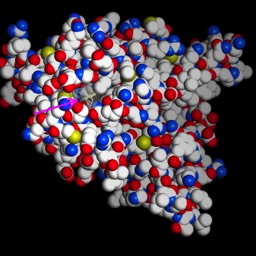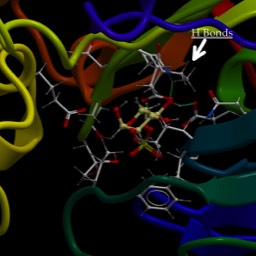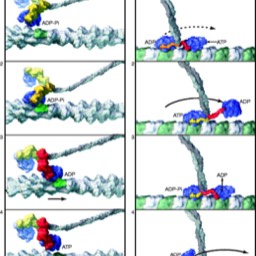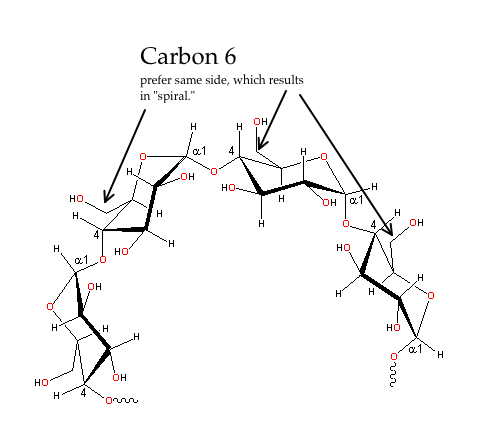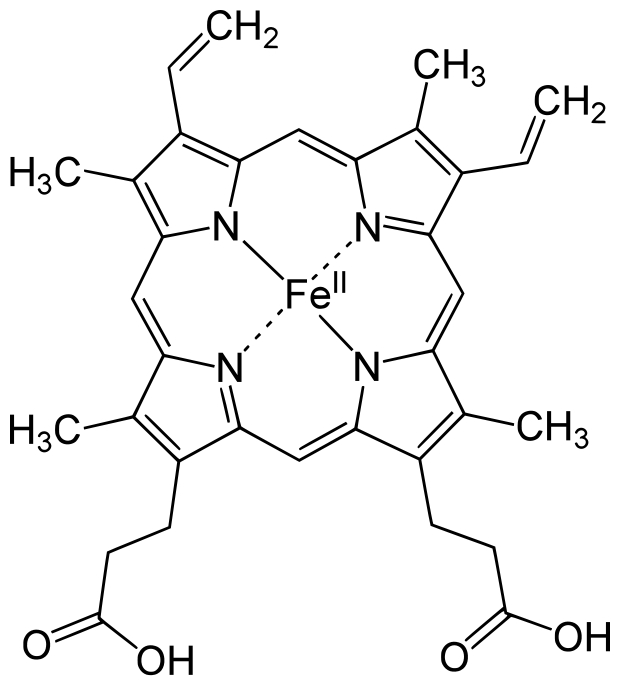
Enzyme Cofactors
Many enzymes use "cofactors" to help carry out their function. The one above is a "Heme." We will see a lot of these and similar structures. The ring is called a porphyrin ring. A heme is a porphyrin ring with an iron in it. The iron can carry oxygen molecules. We discussed hemoglobin earlier. That protein carries oxygen in your blood. Or, to be more correct, that protein carries a 4 heme groups, each of which carries an iron, each of which carries oxygen.
